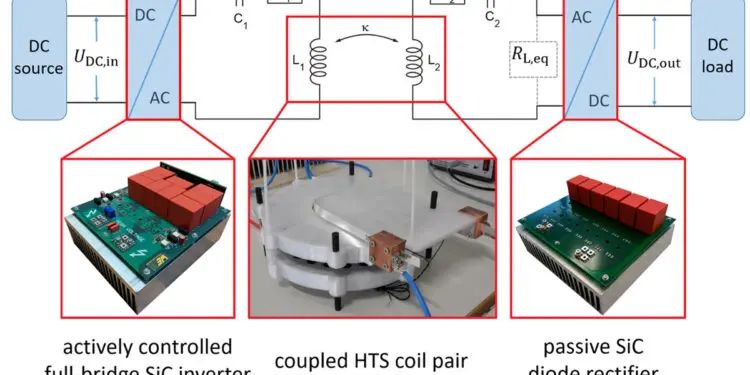With the development of new WPT coils based on superconducting wire, the Würth Elektronik eiSos Group – together with its partners TU München, Slovak Academy of Sciences and Theva Dünnschichttechnik GmbH – has demonstrated a world first! wireless high-power transfer (> 5 kW) at cryogenic temperatures and near-zero losses.
In the context of a research work, a first demonstration transfer of high-power levels (> 5 kW) at cryogenic temperatures and near-zero losses performed successfully which can be seen as a pioneer engineering which in future could be used in terms of power generation and transmission at very low energy losses – such as high-power contactless & e-mobility charging.

State of the Art Wireless Power Transfer (WPT) systems, based on conventional copper coils, are known to exhibit efficiencies well above 90% when operated in the resonantly coupled mid-range regime. Besides full system efficiency, the area- and weight-related power densities of the transmission coils are key aspects for high power applications.
The authors report a fully functional WPT system, consisting of single pancake HTS coils on the transmitter and the receiver side, which exceeds the power density of most conventional systems. Despite the compact coil size, the DC-to-DC efficiency at 5 kW is maintained above 97%. Next to the fundamental coil design, analytical and numerical simulations of the AC loss in the HTS coils are shown, taking into account both hysteresis and eddy current contributions. The results are validated by experimental AC loss measurements of single coils, obtained by a standard lock-in technique up to frequencies of 4 kHz. Experimental results of the full system performance at different frequencies and load conditions are presented.
Conclusions
- Fully functional, superconducting WPT system, consisting of optimized single pancake HTS coils on the transmitter and on the receiver side have been demonstrated
- For the first time, authors have demonstrated that superconducting coils can be used to transfer significant power levels
- The area- and weight-related power densities achieved, 1.59 kW/dm2 and 5.72 kW/kg, exceed the values of most conventional transmission coils
- With quality factors beyond 10000 in the low frequency regime, the proposed coil design is a promising candidate for further studies
- Development of an efficient cooling system without loosing the argument of high power density represents a key challenge
Interactive iposter can be seen at the link below for details































